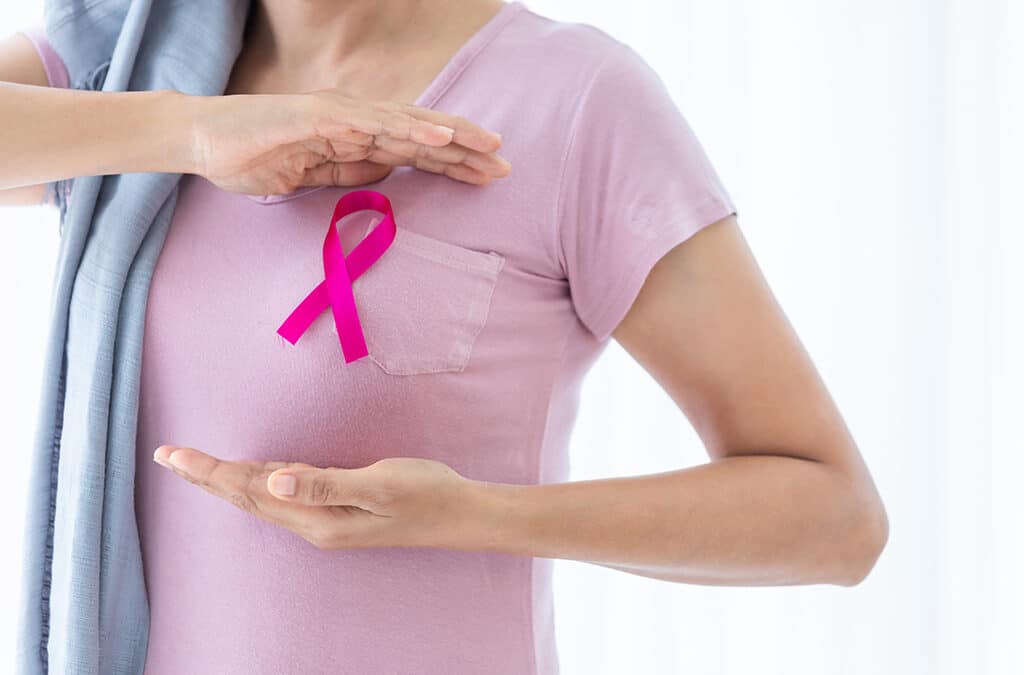- Same Day Appointments Available
- 702-843-6629
How to give yourself a breast self-exam?

The benefits of annual exams you need to know
November 3, 2021
What are the top 8 herbs for anxiety?
December 1, 2021Breast cancer is a really common cancer type in women. Interestingly enough, breast cancer occurs in men as well; however, it does not occur in men as much as in women. There are factors such as age, family history, or a former breast cancer diagnosis that can increase the risk of developing breast cancer.
Examining for breast cancer is highly recommended. There are several analyzing methods, including mammograms in women. However, having a mammogram might be difficult for some women; therefore, many women use breast self-exams to diagnose breast cancers or lumps.
This article will explain breast self-exams, methods to perform them, and what to do when you find lumps.
What is a breast self-examination?
During a breast self-examination, you check your breasts for lumps or changes. Breast lumps have two types of non-cancerous (benign) or cancerous (malignant).
Breast cancer often appears in women older than 50. However, breast self-examinations are not recommended for women ages 40 to 74 because they do not have a high risk of breast cancer. In addition, lumps or changes in the breast may indicate other conditions, such as mastitis or fibroadenomas.
What does a lump feel like?
All breast cancer lumps do not have the same feeling or shape. Therefore, you should examine any lump to make sure of your health. Typically, a cancerous lump in the breast has the following specifics:
- It is a hard mass.
- It isn’t painful.
- Usually has irregular edges.
- It doesn’t move when it is pushed.
- It emerges in the upper outer portion of the breast.
- It gets bigger over time.
Note: All cancerous lumps will not show these signs. Cancerous lumps are typically rounded, soft, and tender. Sometimes, lumps can even be painful as well.
Finding and feeling lumps and performing mammograms for women with dense, fibrous breast tissue is more complicated.
What are the symptoms of breast cancer?
Besides lumps, there are other symptoms of breast cancer as well:
- Swelling on the breast (can be on a part or all of the breast)
- nipple leakage (anything except breast milk)
- Skin scaling or discomfort
- redness of the skin on the breast area
- a thickening of the skin on the breast area
- a nipple turning toward inside
- swelling of arms
- swelling under armpits
- swelling around the collar area
Whenever you experience any of these signs, you need to see a doctor regardless of a lump presence.
When is the best time to do a breast self-exam?
One week after the menstrual period begins, breasts are not usually swollen or tender. Therefore, it is the best time for a breast self-exam. Comparing one examination results with another may be difficult when the breasts are examined at different times of the menstrual period.
How do you perform a breast self-examination?
First, As a woman, you need to be familiar with the shape of your breasts and how they look. Check them regularly is a good idea since a regular check can help you become aware of any changes or abnormalities. Although the vast majority of lumps aren’t cancerous, you need to pay attention to all breast lumps.
There are various methods to check for breast lumps. Many doctors recommend using a combination of the following methods:
First method
Position yourself facing a mirror and look at your breasts. Keep your shoulders straight and your arms on your hips. Keep that body posture and make sure that:
- Your breasts are their usual size, shape, and color.
- Your breasts don’t have any visible distortion or swelling.
- Your breasts are evenly shaped.
In this method, you need to look for irregularities, such as:
- Dimpling, shriveling, or inflation of the skin
- The Position change of nipples or nipples being inverted
- Redness, soreness, rash, or swelling
Second method
Like the first method, stand in front of a mirror, raise your arms and look for the same changes as the previous method. Again, watch for any signs of fluid coming out of either of the nipples (this fluid could be watery, milky, or yellow, or blood).
Third method
Take off all your clothes above the waist. Lie down on a bed. Lying down helps spread your breasts evenly over your chest. In addition, it makes feeling lumps or changes easier. Check from the collarbone to the bottom of the bra line and from the armpit to the breastbone and look for and check for any irregularities.
Don’t use your fingertips. Instead, you can use the pads of your three middle fingers. Use the middle fingers, not the fingertips, of your left hand to check your right breast and vice versa. There are two patterns to check for lumps. You can use an up-and-down moving pattern or a spiral pattern (a circular motion about the size of a quarter.).
You can use three different pressure levels to feel all areas of your breast tissue:
- Use light pressure to feel the tissue close to the skin surface.
- Use medium pressure to sense a little deeper.
- Apply firm pressure to sense your tissue relative to the breastbone and ribcage.
When feeling for lumps, unusual thicknesses, or changes of any kind, do not lift your fingers away from the skin.
Fourth method
Many women believe that feeling the breasts while their skin is wet and slippery is the easiest way. Therefore, they prefer to do this examination in the shower. In fact, Soapy fingers make it easier to feel changes as they slide effortlessly across the breasts. When you are standing in a shower, put one arm over your head and lightly apply soap to your breast on that side until your breast is not dry anymore. After that, use the flat surface of your fingers and gently move your hand over your breast. You need to look carefully for any lumps or thickened areas. Next, do the same for the opposite breast.
When should I visit a doctor?
A doctor should check any changes that might occur to your breasts. Changes may include the following:
- Any new lump
- Unusual thick areas.
- Nipple discharge (anything sticky or bloody)
- Puckering, dimpling, or any other changes in the skin of your breasts
- Size change or inflation of one breast.
- The unusual lower position of one breast in comparison to the other.
Note: Most breast problems can be caused by something other than cancer. It would help if you still talked to your doctor about regularly having mammograms and regular breast checkups, regardless of whether you self-examine.
What can I do if I find a lump on my breast?
There is no need to panic if you think there is a lump in your breast. It is common for women to have lumps or lumpy areas in their breasts all the time. Do not forget that most breast lumps are benign (not cancer). Non-cancerous breast lumps can be caused by a number of possible reasons, such as:
- Hormonal changes
- Benign breast conditions
- Injuries
Call your doctor without hesitation. Finding lumps or other breast changes are worrisome. It is especially important to watch for changes that last more than one entire menstrual cycle or become more significant or more noticeable in some way. It is advised to wait until after your period if you are menstruated. In this way, you can see if the lump or other breast change goes away on its own before making a phone call with your doctor.
Doctors mostly do a physical exam of the breasts along with a prescription for breast imaging tests. Women who are under 30 or not are pregnant, or breastfeeding are often the first or only ones to undergo an ultrasound to evaluate any lump. Ultrasound and mammograms are typical recommendations to diagnose a lump in women who are over age 30 and not pregnant or breastfeeding. Doctors may prescribe additional MRI (magnetic resonance imaging), MBI (molecular breast imaging), and/or biopsy imaging for further testing.
If you discover a lump or other breast change, make sure your doctor explains its cause and, if necessary, develops a plan for monitoring it or treating it. Do not hesitate to get a second opinion in case you are not comfortable with your doctor.
What are the risks of breast self-exams?
Doing breast self-examinations might result in finding a breast change that may lead to unnecessary tests unnecessarily. You may also notice a change on a breast self-exam that is not a symptom of cancer or would not pose a threat to your life. However, since no one knows which types of cancer will cause problems, all cancers are treated. In other words, you may have to undergo treatments (such as surgery, radiation, and chemotherapy) that you don’t need. These treatments are not without harmful side effects.
Let’s sum up …
Breast self-exams are proper ways to find lumps and cancer in the early stages. Women can perform these breast self-exams with some easy methods. However, women must be careful because each lump is not malignant or cancerous. Having a good idea of your body and breasts shape can help women a lot in the discovery of lumps.
If you have experienced lumps or found irregularities successfully with breast self-exams, please share your insight with us in the comments section.




